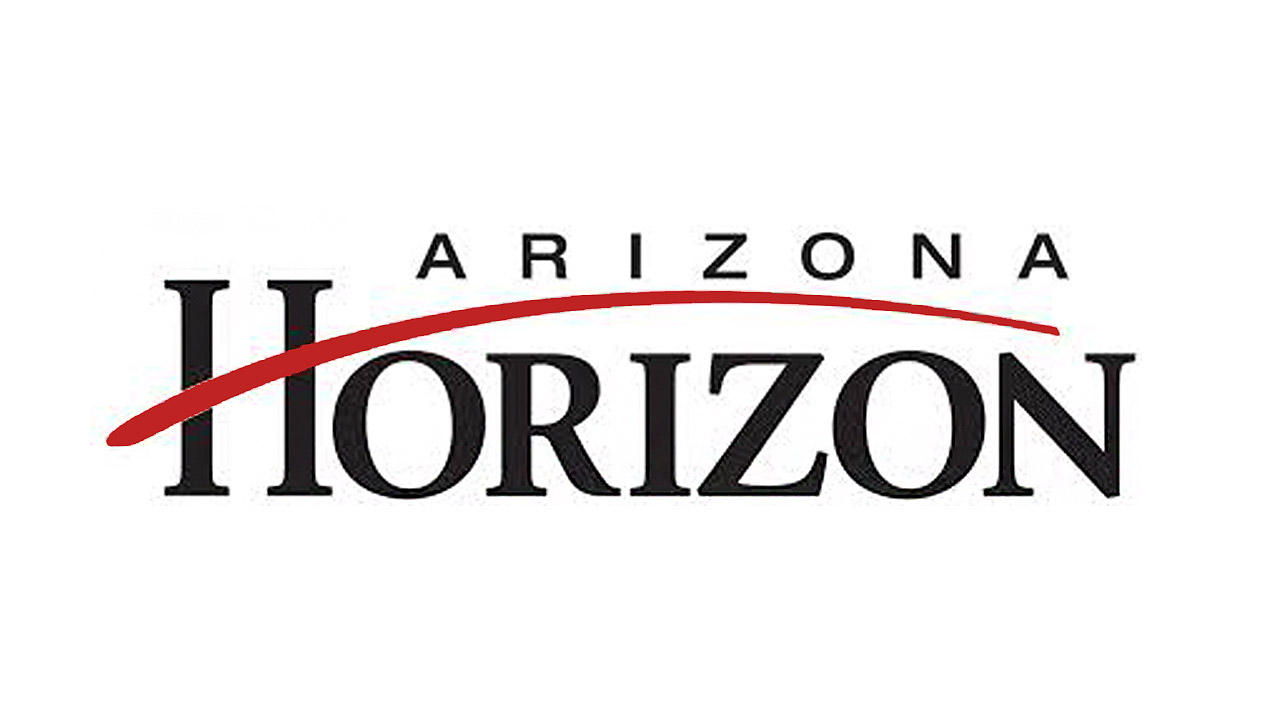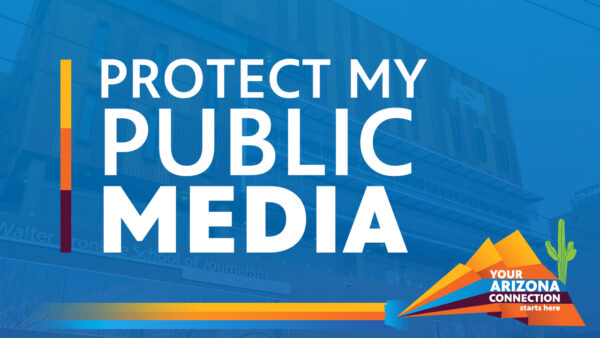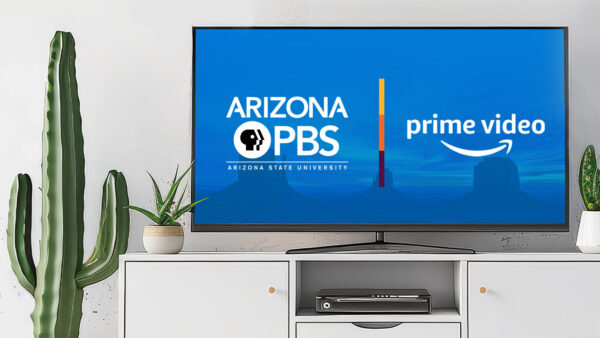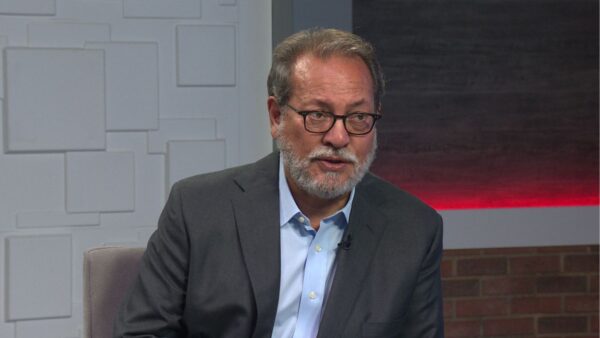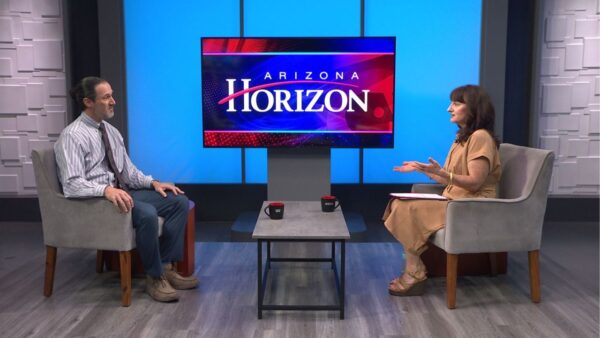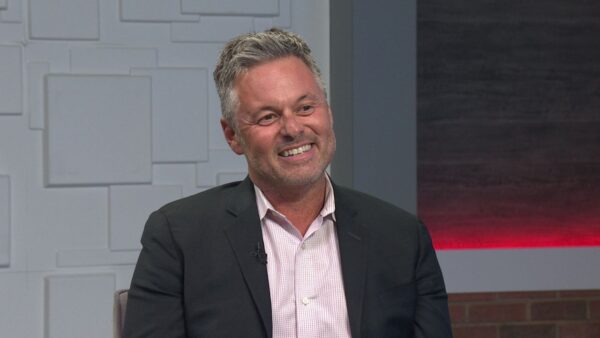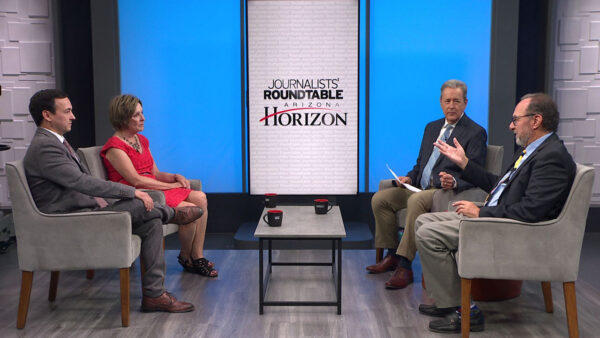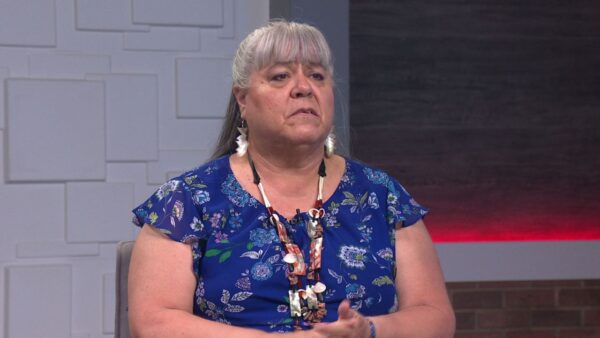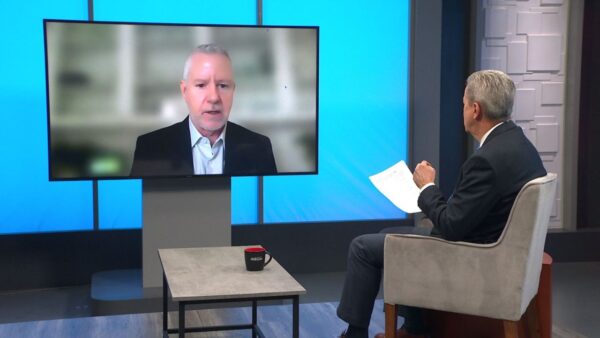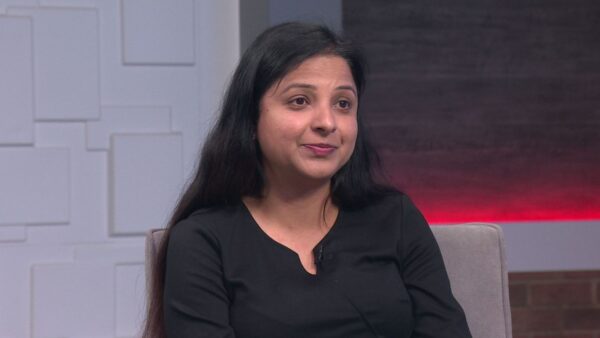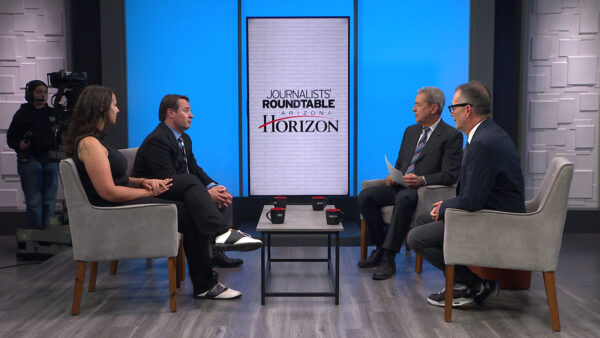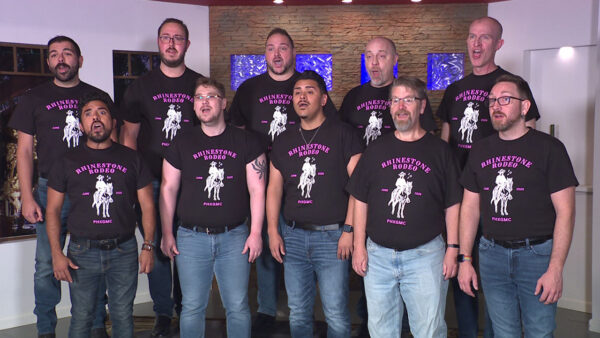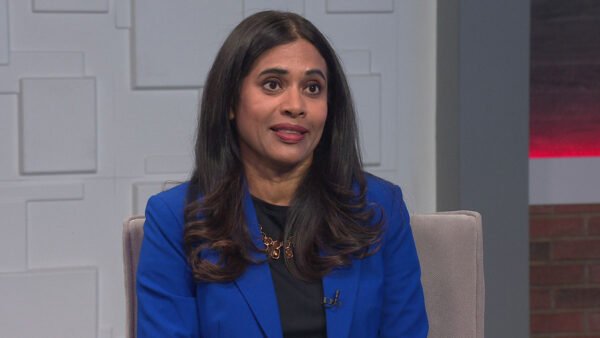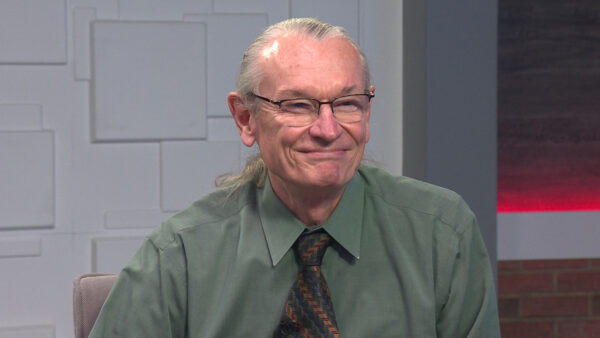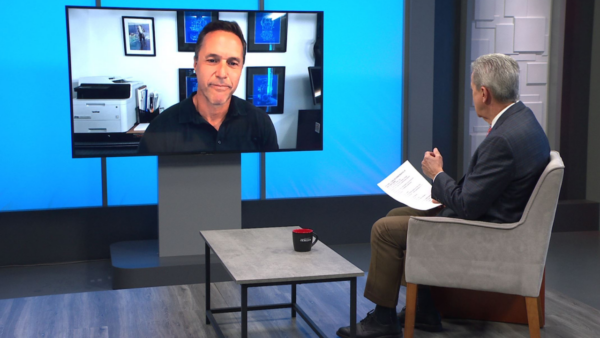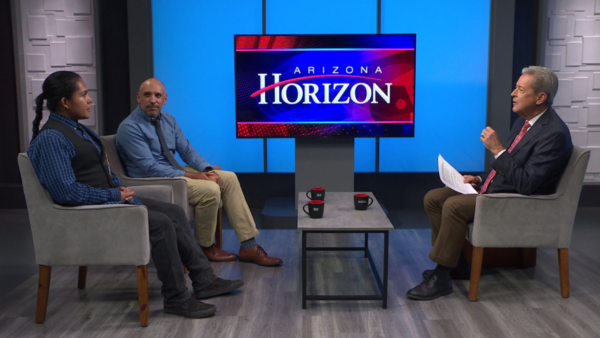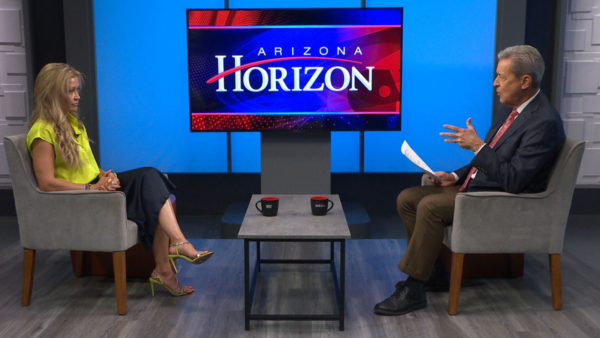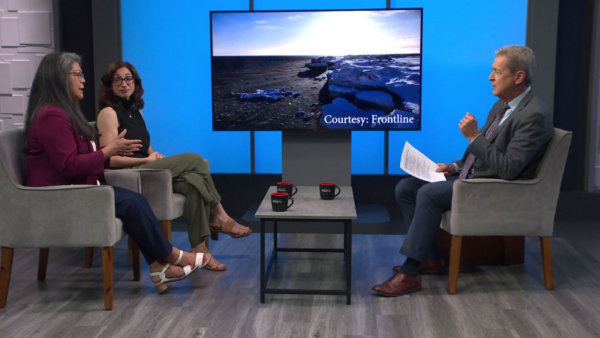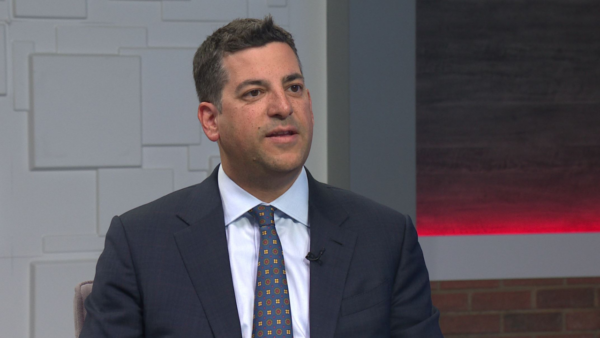When disaster strikes, how do governments communicate with each other? And who decides who’s in charge? Those are some of the issues we’ll discuss with government state, county and local officials, including Phoenix Mayor Phil Gordon.
>> Michael Grant:
Tonight on "Horizon," how well do emergency responders coordinate with each other? Have lessons been learned in the wake of hurricane Katrina? And an Arizona artist honors the children lost in war.
>> Announcer:
the friends of Channel 8, members who provide financial support to this Arizona PBS station, make "Horizon" possible. Thank you!
>> Michael Grant:
Good evening. Welcome to "Horizon." I'm Michael Grant. When hurricane Katrina struck the Gulf Coast communication was limited at best. This fact made the coordination of various emergency responders difficult. In the third part of our series, "Disaster, Is Arizona Prepared," we take a look at what city, state and county agencies will do in an emergency. Producer Larry Lemmons gives us an overview.
>> Larry Lemmons:
A survivor dangles over the flooded City of New Orleans in the aftermath of hurricane Katrina. Authorities are caught off guard by the magnitude of the disaster.
>> Gov. Kathleen Blanco:
We are in the planning process right now of attempting to locate appropriate places to try to evacuate those folks who stayed in the city. The plans are not firm yet. We're working with FEMA. We are grateful that FEMA is by our side. The magnitude of the situation is untenable. It's... it's... it's just heartbreaking.
>> Larry Lemmons:
In the days to come, the world would discover that there were lapses in the coordination between various levels of emergency responders.
>> David Engelthaler:
It makes you rethink a couple things. It makes you rethink how quickly can the federal government come in and respond? It kind of saddens me as somebody who has been involved in emergency response and emergency planning for many years in this state to see another state really have so many problems and fail in so many areas and at the local level, at the state level, the federal level. We've also seen many other disasters where that hasn't happened, lots of other hurricane disasters. We've seen other disasters on the west coast and other places where the federal government works within a system and it all comes together. Unfortunately, Katrina was just a real poster child for when everything falls apart. That's definitely the exception and not the rule.
Cop radio:
Go ahead, triage.
Emergency Personnel radio:
We've got some immediates on the ground here we're going to need personnel.
Cop radio:
Copy.
>> David Engelthaler:
Here in the Valley we know that fire talks with police. We know that emergency management talks with public health. We know that the city talks with the county and the county talks with the state. Those things don't happen in a lot of other places. So we do have that luxury of coordination here in Arizona.
>> Larry Lemmons:
A mock disaster exercise in Pinal County is an attorney opportunity for various local, state and federal authorities to ensure communication and disciplined response from all entities.
>> Frank Navarette:
The first person in charge is a local first responder. That's where it starts. As it proceeds up the line you establish an incident command center. Once you stab establish that incident command center that stays in place. It's part of the national response plan and we follow those guidelines.
>> Larry Lemmons:
Various scenarios required different responses but there are constants through any disaster. Communication is a vital importance in any situation.
>> Cam Hunter:
Interoperability is a huge thing, as I'm sure the public understands watching some of the recent disasters and emergencies that occur. Typically before police couldn't talk to other police or fire or the medical response community. We now have, with federal homeland security purchased five communications vans that allow -- afford us that interoperability. A lot of first responders also have spent a lot of time and thought building the ability to be able to talk to each other a disaster.
>> Frank Navarette:
Second thing is we taken strict measures on making sure that the first responders throughout the state have the appropriate equipment that they need in order to be effective. We've regionalized the state. We've taken all 15 counties and carved five regions out of the 15 counties so we would have more of a good positive working relationship within all of the various folks within those regions. We've standardized our training throughout the state. We also have standardized the type of equipment they buy so when you have people coming from Phoenix to, for example, to Pinal County, they've got -- the fire people use the same equipment as the local people. So we've taken a lot of these measures that just help make this whole thing a little bit more homogeneous and positive in terms of how we respond.
>> Larry Lemmons:
Despite destruction and confusion wrought by hurricane Katrina, the experience of responders in that disaster has contributed to responders in. It has proven to be a lesson in the importance of coordination between all entities involved.
>> Michael Grant:
Joining us now in studio to tell us how various agencies work together, the Mayor of Phoenix, Phil Gordon, Judy Kioski, spokesperson for the Arizona Division of Emergency Management and Chief Larry Black, chief of enforcement for the Maricopa County Sheriff's Department. Let's stick with the dysfunctionality theme for just a minute because it maybe puts functionality in some better context. Obviously, Mayor, the City of Phoenix has a little set to with FEMA post dispatch really of the Rita people. Has that been squared away?
>> Mayor Phil Gordon:
Unfortunately it hasn't. Most experienced FEMA team, urban search and rescue team in the nation with the most on the ground experience, was sent home early at a time when it was needed, and is still suspended because of an official on the ground that determined that U.S. Deputized marshals shouldn't have weapons to protect the team and the federal equipment.
>> Michael Grant:
This seems astounding.
>> Mayor Phil Gordon:
It was unbelievable to me. In fact, when I first heard about it, I thought, okay, somebody's got this wrong. They had time to write a four-page letter to the City of Phoenix suspending and sending home this team that all they wanted to do was save lives and suspending it and to this date, in fact, as recently as last week when I talked to the acting deputy, they're not changing their position.
>> Michael Grant:
I just want to make sure that I've got this straight. You did exactly the same thing with Katrina that you then did in Rita and it was okay in Katrina and not okay apparently in Rita?
>> Mayor Phil Gordon:
Well, there's different versions from FEMA depending on who's talking and who's right writing the letters but we did the same thing. We have four U.S. Deputy marshals that were Phoenix police officers that were deputized by the U.S. Marshal, trained in federal law, jurisdiction throughout the country, went along with the FEMA team, not as part of the FEMA team, not at the payment of the federal government, but for protection and for transportation, in fact was needed significantly both in Katrina and Rita, and was on the ground for the 14 days at Katrina, was on the ground for about four days at Rita, with knowledge of FEMA, with permission of FEMA officials, and then because of one official saying it was unauthorized, was sent home immediately, confronted at the airport, sent home, and suspended, and to this moment, despite our delegation's intervention, authorities like the Sheriff's Department and everybody, throughout the country, and other teams that had security and weapons, we remain --
>> Michael Grant:
That's amazing. Larry, you were telling me that you guys actually got bottled up about 40 miles outside of New Orleans and ultimately had to almost literally sneak into New Orleans with the assistance of some local guys.
>> Chief Larry Black:
Yeah, for some reason there was some real disorganization about how -- where the help was needed, yet you could see on the news what was going on. And there was a local deputy sheriff at the direction of his sheriff that said, I know how to get them in, and it was around some roadblocks that had been set up. We went with a hundred-man team that had complete self-contained because we didn't want to be there and be a burden to a place that already didn't have it. So they let us in the back way and we got into the fourth precinct of New Orleans at Algiers.
>> Michael Grant:
Was this some sort of territorial squabble involving the state police and, hey, these guys are from out of state and -- any reason for why you would be bottled up outside of a place that obviously needed such assistance?
>> Chief Larry Black:
You know, there was a real state of confusion that I saw as far as communications between, would it be the state or the highway patrol or whoever it was running it for Louisiana. The sheriff's association, the sheriff's all got together and set up their own system, and that's what we were there with, and they seemed to communicate real well amongst themselves. There was a share enough northern Louisiana that needed help and they immediately dispatched people up there and there was no problem. But this seemed like a state police thing. I don't have any concrete evidence. We got over there and helped with New Orleans police. They were just totally stunned. We came all the way from Arizona and we were there eight days after this had started, and that was the first help that they had saw, and we came all the way from there, from Arizona. And they knew that there had been people turned away.
>> Michael Grant:
It sounds like, though, it was being patched together on an ad hoc basis, Judy, which I guess leads me to you. I am told that we have, State of Arizona has a State of Arizona response and recovery plan. Is that something other than ad hoc and designed to make sure some of these things don't happen?
>> Judy Kioski:
Exactly. It's a very comprehensive plan, almost 500 pages, and what I'm proud to say is that our plan is part of a state program, which has received national accreditation. So we are the third program within the nation to receive this accreditation. What does that mean? It means we've done our homework. We're testing our plan, working with our local partners, county partners, to make sure that we do have a comprehensive plan.
>> Michael Grant:
Here's the concern, though. There were plans in New Orleans and Louisiana and that kind of thing, but when push came to shove, I mean, obviously something went seriously wrong.
>> Mayor Phil Gordon:
Mike, I think, first of all, the phenomenal relationship that we heard about exists between all the different levels of government and agencies. We've had decades of training together. In fact, most of the police and fire have gone through the same academies, trained together for years. Chiefs in different cities have known each other. They know how to get a hold of each other. I mean, everybody's worked together. And the command and control components of the first responders stay in place, not withstanding change of local elected officials. That's a big difference from the southeast and areas we saw. But more importantly, we've actually had the practical experience from the heat problems we've had here to Oklahoma cities to New York where we've actually had the experience and the plans have been implemented and then changed together. So it's not just a 500-page plan which has stayed on the shelf, but it's been used, practiced, modified, changed, and then we're decentralized, too, which I think is an important component. The local governments know, and are waiting for the county and the federal government and the state to come in. But first responders are out, there they know what to do, they know who is coming afterwards, and we've had the experience.
>> Michael Grant:
To quote, I think it was Al Hague, more than two decades ago, "I'm in charge here. When something like this happens, who is initially in charge?
>> Judy Kioski:
It is a local responder, the first responders that come on scene, and they take control of the situation. They establish what's called incident command. As any get overwhelmed, if they need more -- to bring more resources to bear, then they're going to call on other agencies. They could call on the county and eventually call on the state. But what we say is disasters are local. Those first responders that are used to responding in the community and know how to take care of that and set up that incident command. When the state gets involved, we open up the emergency operations center, which is just another level of command and control, but those first responders are just so key.
>> Michael Grant:
Larry, when the first responders get on there and they say, hold it, we're overwhelmed, is it a combination of responding for lack of -- or requesting horizontally for lack of a better term, for example, Phoenix calling on Tempe or Phoenix calling on Glendale, or do they go in all directions, including maybe vertically going up to the county, sheriff going out to affiliated police departments or other agencies? How does that work?
>> Larry Lemmons:
Well, if we have a major disaster, obviously the agencies all get along real well together and they'll put together a response team for whatever is necessary. Sometimes there's specific things, if it's a water related stuff, they will use resources, they may go to the county emergency operations center originally to say, what resources are local and then do we have to go to the state, and we may get a piece from Tempe, we may get a piece from the sheriff's office, highway patrol, depending on what it is to tackle that. So there is that level all the way across. I think that everybody seems to get along real well and works together with the same idea. And there was not that confusion. There was a lot of confusion early on in Louisiana.
>> Mayor Phil Gordon:
Mike, if I can add, first you heard interoperability. The Valley, Phoenix was the lead, but we have other agencies, built an 800-megahertz so we can not only talk to each other but we can talk through buildings. You have that. You also have in the case --
>> Michael Grant:
That was one of the significant lessons of 9/11 and obviously communication difficulties were --
>> Mayor Phil Gordon:
So we have that. We also have, particularly in the case of fire, you know, when you need a fire truck, whether it's localized, medical emergency or a disaster, God forbid, you'll get the closest truck or trucks because they're all dispatched out of the same area. It's all one dispatch, the need. So all the departments have worked together, trained together around being dispatched. Police and National Guard units, again, as the need is there, everybody knows who to call and when to call and, in fact, it isn't my territory, your territory. These are brothers and sisters that have worked together and have trained together, and I can't emphasize again the professional command element that this state has versus other areas of the country where when a Mayor changes, then the new police chief comes in and has to learn the system and the new commanders come in. It's not a political system. It's a professional system that stays.
>> Michael Grant:
When do the feds, I guess, FEMA, lock into this process? Obviously there has to be a presidential declaration of emergency.
>> Judy Kioski:
Certainly. But even before that we're informing them. Just like when a disaster is developing and the state gets informed early on, we might stand up at the emergency operations center with just a small team to monitor a situation. So when state assistance is requested, we're already up to speed and we know what needs to be done, and just like that, we're going to keep our federal partners informed about what's occurring so when the need comes they are already up to speed and they know what our needs are.
>> Michael Grant:
Larry, does the interoperability extend into federal counterparts as well as local and other counterparts.
>> Chief Larry Black:
The new communication system they all marry up together so they're basically using one channel. What we saw in Louisiana, though s their whole system was gone, so they didn't have even the initial one to start with. That was one thing that I don't think they anticipated. They didn't have -- they had one channel that would actually remain in operation in New Orleans for the whole city to operate on. It's amazing how much you realize they depended on cell phones. None of that work. And you have to have those initial infrastructures and they didn't have that plan ahead. It all got flooded. Their whole warehouse was flooded, the stuff the city was going to survive on because of the levies it was gone.
>> Michael Grant:
Well, it is easy, I guess, to overemphasize New Orleans and also Katrina, but that was a disaster of a scale, particularly where New Orleans was concerned, that is difficult to contemplate. Let's say --
>> Mayor Phil Gordon:
Well, it's difficult to imagine on one hand but it's a fool's game not today, and especially after 9/11, not to imagine, and that's where I think the new chapters of the plan that's been referred to continues to be added, that assume the worst, and the worst that we're assuming, unfortunately in the world today, we've seen may not even be the worst. Particularly terrorist issues. You could have catastrophes in Southern California or in Arizona, God forbid, that will require a lot of creativity.
>> Michael Grant:
In fact, you're going to go over and meet with the Los Angeles Mayor next month on generally the subject for what purpose?
>> Mayor Phil Gordon:
Well, I'll tell you, I actually went to New Orleans to pick up our first team of 84 police officers and firefighters and was flying in a jet for what seemed almost like an eternity, landing and seeing the devastation and it became so obvious to me that the scale of disaster like that, whether it's man made or natural, is just way beyond any local or even our Valley's ability to handle after a while, and I was thinking, given our proximity to the second largest city in the United States, we're the fifth largest, working with our state and our county and our other regions, let's have a mutual aid agreement both for evacuation and for mutual aid in the event Southern California, L.A. gets hit or we get hit. We're 200 miles away, if you split the difference. We've got lot of, again, similarities. So the idea occurred to me, I called up the Mayor, he said, it's a phenomenal idea, let's get our professionals together and start working on an evacuation what-if plan.
>> Michael Grant:
Well, there are a series of mutual aid packets --
>> Judy Kioski:
Exactly. There's actually mutual aid agreement between states, and that's what allowed those county sheriff's office to go over and do that. It was through this EMAC agreement, emergency management accreditation compact so we can work with states, and certainly the New Orleans, Mississippi, that was so overwhelming, and we needed to call in other states and they did, and they called on us. Just like we used that mutual aid agreement to get some resources here during the flooding that we experienced in the state in the early part of the year. So we are using it and we're helping with it.
>> Michael Grant:
Judy, thank you very much for joining us. Chief Larry black, our thanks to you as well. Mayor Phil Gordon, thanks. Best of luck with that pesky FEMA thing. A Southern Arizona sculptor and filmmaker devoting all his energies these days to children, specifically children who died September 11, 2001, and since then in Afghanistan and Iraq. Producer Sooyeon Lee tells us his story.
>> Dale Clark:
If I try to make life go 1, 2, 3, I -- it goes 1, 5, 6, 2, 9, and I like my paintings to be sort of conscious accidents.
>> Sooyeon Lee:
Artist Dale Clark lives and works at the chicken frog ranch near Bisbee. Instead of horses and cows, his ranch is full of paintings, sculptures, film cameras, props and lights.
>> Dale Clark:
Drum roll. Drum roll.
>> Sooyeon Lee:
Painter, sculptor, filmmaker and activist, Clark has many stories to tell.
>> Dale Clark:
Your first breath was in Kansas in '23. That's 82 years ago. And from there I went to Idaho. From Idaho I went to New York City and won a scholarship to Cooper union, was almost 40 years in Santa Barbara and bought a beautiful piece of land with an ocean view and a stream running through it, and I planted a lot of PITI SPORUM vines so the building inspectors couldn't see what I was doing.
>> Sooyeon Lee:
What were you doing?
>> Dale Clark:
Building illegal structures that weren't up to code. I used to do large architectural sculpture, some two, three and four stories high, and I found that I was trying to please the owner of the shopping center, his partner or his girlfriend or -- that I was trying to keep everybody happy and the architect. And so I stopped doing the large architectural. This is one that is -- that I'm just starting. When I stopped doing the commissions, I developed a technique that I call metal paintings where I take large sheets of copper and go over and silver plate them and with acid and various chemicals I oxidize. It's been my funding base. I have been doing these copper paintings for 30-plus years, and people like to give me money and I like to do them. So that has been my vehicle that I could do like the children's memorial or the house of dynamite that I did 20 years ago. The first thing it made was how huge our nuclear stockpile was 20-plus years ago. I did the math and I thought, well n dynamite would it probably be sticks of dynamite that would fill a big -- about the size of a big refrigerator. I was going to join the great peace March. The empty boxes were 650 pounds of cardboard boxes. So all of a sudden, I wasn't going to walk. So that was my first adventure into using art as making a statement. I'm looking for a lock of hair that would like to go in the tombstone.
>> Sooyeon Lee:
Lately all his time and energy are dedicated to one subject, remembering children at war.
>> Dale Clark:
This is the most vulnerable segment of our society, those people, the children, that can't defend themselves. One of the 6-year-old child, I think it was, was frightened by the bombs and ran and fell in a well and died, and for some reason, that just d that just hit me, you know. And I guess that I feel that some of my silence maybe contributed to that. I don't know. We've only got 2,000 tombstones made. We still have another 4,000, and that's the real conservative estimate there. They're estimating up to 8,000 children have died.
>> Sooyeon Lee:
Clark is preparing another tombstone for a child. This time it is his own.
Clark:
When you called me the first time, you know, that was a wonderful telephone call, and then my second telephone call that might grandson O.D.'d on drugs. Mike dear sweet 28-year-old grandson died because it seemed like the world was too hard for him, and so that was his self-medication. I have to accept that that's how a lot of people in our country survive, by not feeling, by going elsewhere, and so he went elsewhere, and one of the tombstones that I'm going to cast, his father is bringing me some of his ashes and we're going to mix it up in the hydro stone and put some of Billy's ashes in there.
>> Sooyeon Lee:
Along with his grandson's tombstone, the children's memorial will travel all over the country with messages of peace.
>> Michael Grant:
Tomorrow night we'll complete our series, Disaster, is Arizona prepared? A look at what you can do personally to be prepared. Thank you very much for joining us on a Thursday evening. I'm Michael Grant. Good night.
Phil Gordon:Mayor of Phoenix;
